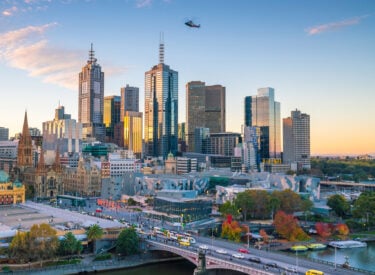
Key takeaways
No Australian city made it into The Economist’s top 50 most walkable cities.
Walkability is more than just footpaths—it’s about easy access to work, shops, schools, parks, and public transport.
Despite the national ranking, Melbourne has highly walkable suburbs like Fitzroy, Carlton, and Richmond. These areas attract demand due to their pedestrian-friendly infrastructure, making them prime locations for property investment.
Walkable neighbourhoods are more desirable and hold their value even in fluctuating markets. They attract diverse tenants, including professionals, families, and downsizers, all seeking convenience and lifestyle perks.
"Why walk when you can drive?"
That seems to be the mantra behind the planning of many Australian cities—none of which made the cut in a recent ranking by The Economist, of the world's top 50 walkable cities.
But there are some great lessons for property investors in this story.
Fact is, it’s not surprising to see that no Australian city cracked the top 50. But before we dive deeper, let's clarify what exactly makes a city "walkable."
Walkability isn’t just about having pavements— it encompasses the ability to walk to work, shops, schools, parks, and other amenities, which fundamentally enhances the quality of urban life.
Cities that excel in this often enjoy higher real estate values, healthier populations, and less reliance on cars.
While Australian cities may not have made it to the global top 50, this doesn’t mean the entire country is trailing behind.
In fact, there are pockets within our cities, particularly in Melbourne, where walkability is quite pronounced.
Suburbs like Fitzroy, Carlton, and Richmond offer a pedestrian-friendly lifestyle, with everything residents could need just a short stroll away.
These areas are bustling with cafes, shops, parks, and offices, making them exceedingly attractive for residents and investors alike.
So, why do these disparities exist within the same city?
It all boils down to urban design and historical development patterns.
Central suburbs, often older and more established, were designed during times when walking was the primary mode of transportation.
In contrast, outer suburbs, which developed later, were planned during the automobile boom—resulting in wider roads, larger blocks, and a greater distance between amenities, which all discourage walking.
What does this mean for property investors?
In my mind, it’s important to consider walkability when selecting investment locations.
I’ve found that investing in areas that offer a high walkability score can be a strategic move.
Properties in walkable suburbs tend to maintain their value and desirability, even in fluctuating markets.
They attract a diverse range of tenants, including young professionals, small families, and downsizers, all of whom appreciate proximity to amenities that enhance their lifestyle.
Conversely, the lack of walkability can be a stark disadvantage
Most outer suburbs lack what urban sociologists call "third places" — social surroundings separate from the two usual social environments of home and the workplace.
These are places where people can gather informally, which enhances community interaction and satisfaction.
Without these, neighbourhoods can feel isolated and less vibrant, which in turn can affect property demand and rental yields.
As cities evolve and more people prioritise lifestyle over other factors, walkable suburbs are likely to see increased demand.
This is a trend the research team at Metropole considers when suggesting investment locations for our clients.
The future of real estate investment will lean heavily on the liveability and sustainability of neighbourhoods.
Walkability isn't just a nice-to-have; it's becoming a crucial element in the value proposition of real estate.
So, while Australia may not yet compete with the likes of Vienna, Amsterdam, or Tokyo in walkability, there are valuable lessons to be learned and opportunities to be seized in our own backyards.
For investors, focusing on areas that offer or have the potential to develop into walkable communities could be the key to robust and sustainable returns.
Remember, in the realm of real estate, it's not just location, location, location— it's also lifestyle, lifestyle, lifestyle.














